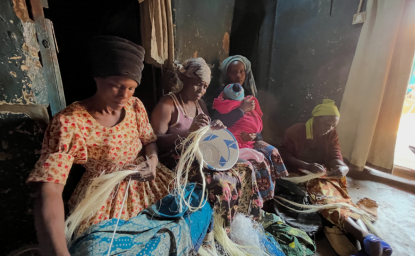The migrant caravan dominated much of the lead-up to the U.S. midterm elections. While the U.S. pundits debated the appropriate response to the caravan and many criticized the decision to send troops to the U.S.-Mexico border, Mexico began to consider pragmatic solutions to address these migration flows.
Mexico has long been a transit country for migrants passing through to the United States. In recent years, however, an increasing number of migrants have chosen to stay in Mexico as the economy grew and the government implemented more progressive asylum laws. Yet, the number of migrants who solicited asylum or legal entry in Mexico was considerably lower than the United States. For example, the United States is still much better for sending larger remittances home. According to Pew Research, most of the remittance dollars flowing to Latin America come from the United States and for migrants from Mexico, El Salvador, Guatemala, and Honduras, this share is far higher – more than 80% of migrants from each of these countries live in the United States. It is safer for migrants in the United States, and there are significant Central American communities in the United States who can provide support and assist with assimilation.
However, things are changing. Not only have the strict immigration policies and hard line response from the Trump administration created an unwelcoming environment for Central American migrants, but also Mexico’s policy response is offering a more attractive alternative to the United States.
In the first few days of his young administration, President Andrés Manuel López Obrador proposed increasing work visas for Central Americans, signed an agreement with Central American governments for an integral development plan, and is in talks with the United States and Canada to invest in southern Mexico and Central America to stem migration. “This is not a problem that can be confronted only with the use of force, with coercive measures, human rights must be guaranteed,” AMLO said last month.
In October, former President Peña Nieto started the “Estas en tu Casa” (You are in your Home) initiative. The Peña Nieto government also employed the help of UNHCR to help the Mexican Commission for Refugee Assistance process the growing number of asylum claims at Mexico’s southern border.
The response is not limited to the federal government. The Mexico City government provided as many as 18,000 meals a day, and volunteers throughout the country can be seen offering food, water, medical care, clothing, and even haircuts and cell phone charging stations to migrants coming in the caravan. These friendlier policies and attitudes have facilitated the nearly 3,000 migrants accepting offers to apply for asylum in Mexico.
The numbers of migrants from Central America passing through Mexico are not slowing down. The Colegio de la Frontera Norte estimates the current annual flow of undocumented crossings from Central America to the United States through Mexico at 350,000 to 400,000—the highest seen in over a decade. The reasons people flee are varied, but they often related to extreme violence, poverty, climate change, and other dire factors. In short, people will continue to migrate, they will likely continue to do so in caravans for safety, and they will (and have the legal right under international law to) seek asylum. Mexico, by offering increased legal avenues and institutional support, can turn the “problem” of migration into an economically and socially favorable environment for both migrants and Mexicans, if implemented correctly.
It will take time before migrants truly begin to view Mexico as a place where they can reside safely, find dignified work, and live in a community that welcomes their customs. More legal options for migrants and asylum seekers must be accompanied with rule of law reforms, worker protections, targeted programs that place Central Americans in areas where they are not competing for jobs that poor Mexicans also need, and anti-discrimination campaigns to ensure more migrants are not met with pushback. The building humanitarian crisis at the Tijuana-San Diego border also needs immediate attention. Yet, these policy options would be a good start. They are a more sensible response than closing off legal avenues and sending the military.
While the United States would love for Mexico to step up and accept more migrants, Mexico should also not be alone in shouldering the responsibility of addressing the challenges that an increase of Central American migrants entails. The United States, like it or not, needs to fix its immigration system to better adapt to the changes in migrant demographics. President Trump and Congress must agree on practical solutions such as increasing the number of immigration judges, implementing an orderly and consistent process to review asylum applications, and find viable alternatives to extended periods of detention for migrants. The United States should also follow suit with the other 165 signatory countries and agree to the Global Compact for Safe, Orderly and Regular Migration—a compact that respects the sovereignty of each nation to enforce its borders, but also urges leaders to respect the human dignity and rights of migrants. For now, the Mexican government has signaled that it may have the political will to enact policy solutions to this mounting challenge.
This article was originally published on the Mexico Institute's blog on Forbes.com...
Author

Advocate for Latin America, Refugees International

Mexico Institute
The Mexico Institute seeks to improve understanding, communication, and cooperation between Mexico and the United States by promoting original research, encouraging public discussion, and proposing policy options for enhancing the bilateral relationship. A binational Advisory Board, chaired by Luis Téllez and Earl Anthony Wayne, oversees the work of the Mexico Institute. Read more





